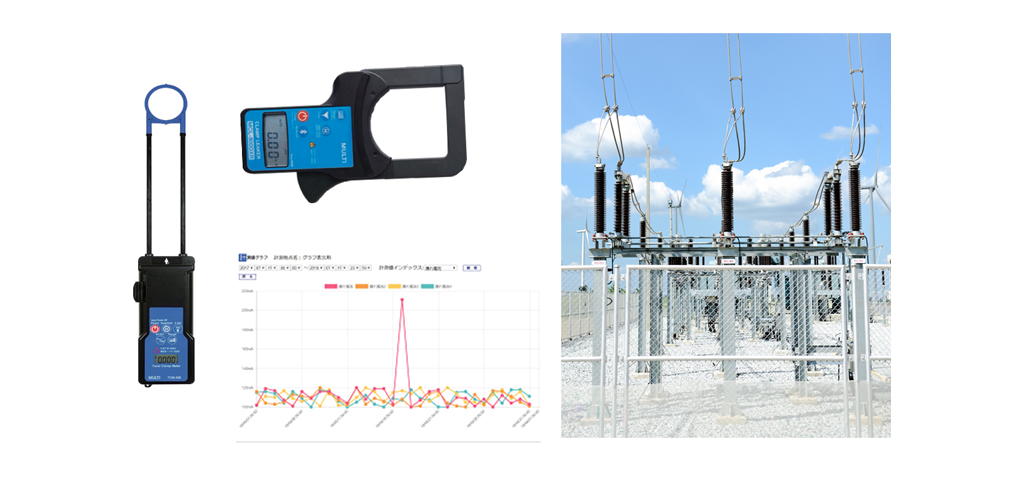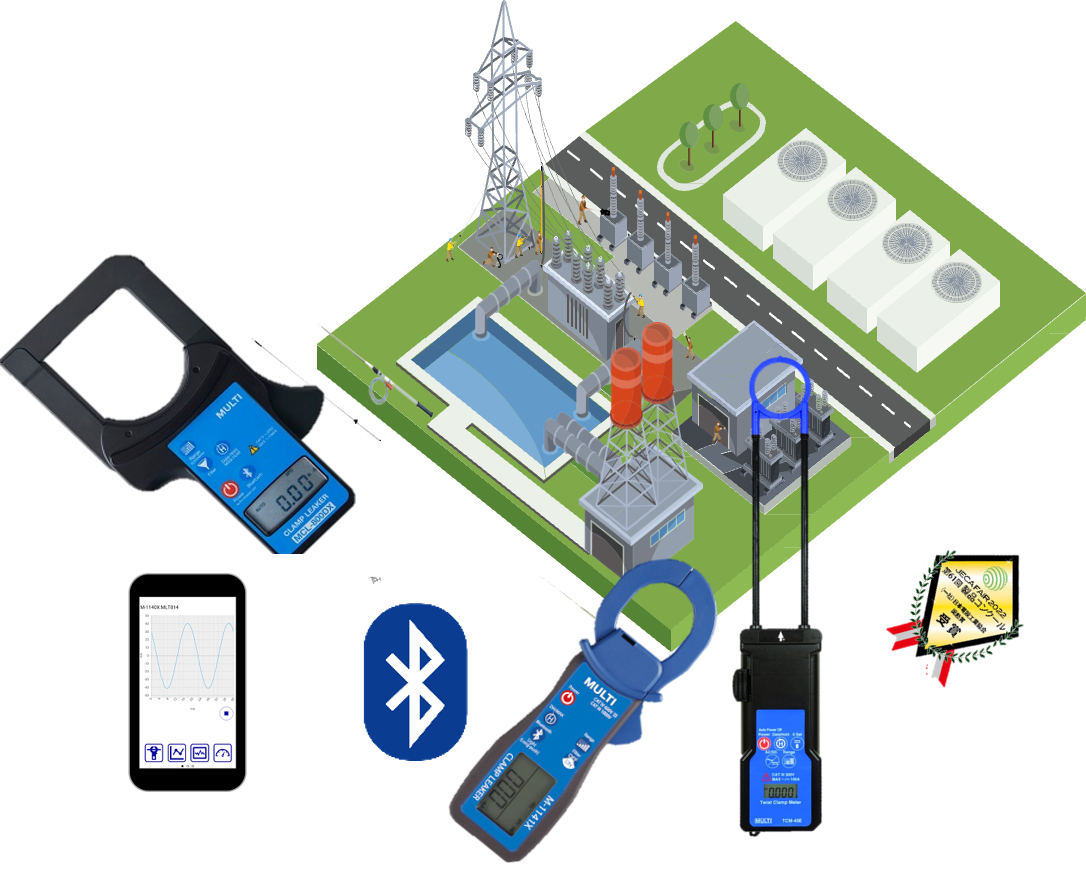Japan’s highest end precision current measurement technology since 1985
LEAKAGE CURRENT CLAMPS

In power systems, the measurement and management of leakage currents are crucial for ensuring the safety and reliability of electrical assets. Leakage currents can indicate insulation problems, electrical faults, and potential hazards, making accurate measurement and analysis essential. This application note explores the use of current clamps for leakage current measurement in power system assets, offering a practical guide for engineers and technicians.
Understanding Leakage Current
Leakage current refers to the unintentional flow of current from electrical conductors to unintended paths. It can occur due to insulation breakdown, contamination, or other faults in power system assets, such as transformers, cables, or distribution equipment. Leakage currents can potentially lead to equipment damage, electrical fires, or pose safety hazards.
Leakage current may indicate:
Imperfections in Insulation: Insulation materials may have microscopic imperfections, voids, or impurities. These imperfections can provide unintended paths for electric current to flow through the insulation, leading to leakage current. The quality and purity of the insulation material play a significant role in minimizing imperfections.
Surface Contamination: Dust, moisture, dirt, and other contaminants on the surface of the insulation can create conducting paths that allow current to bypass the insulating material. Surface contamination can be a significant contributor to leakage current.
Temperature and Humidity Effects: Temperature and humidity levels can impact the conductivity of insulating materials. High temperatures and humidity levels can lead to an increase in leakage current as the insulation's resistance decreases. This is especially relevant in high voltage and high-power applications.
Electromechanical Stress: Mechanical stress, such as vibration, bending, or flexing, can cause localized changes in the insulation material, leading to increased leakage current. This is particularly important in situations where cables or wires are subject to mechanical stress.
Voltage Stress: Applying a high voltage to insulating materials can cause electrical breakdown, resulting in increased leakage current. The electric field strength within the insulation material can cause ionization or partial discharges, leading to current flow.
Material Degradation: Over time, insulation materials may degrade due to factors like UV exposure, chemical reactions, or aging. Degraded insulation materials can develop cracks, voids, or other defects that contribute to leakage current.
Corona Discharge: In high voltage systems, especially in areas of sharp curvature or irregularities, the electric field strength can become concentrated, leading to corona discharge. Corona discharges can create localized ionization and leakage current.
Environmental Factors: Environmental factors, such as pollution, salt, or chemical exposure, can lead to surface contamination and chemical changes in insulating materials, which can exacerbate leakage current.

MCL-800DX is a digital clamp meter with integrated Bluetooth connectivity. The clamp meter sends the measurement results to an app on a smartphone. Also, the data can be remembered to a .csv file. The mobile app visualizes the data on a user-friendly interface. The app shows the measurement results, and the measured waveform.
M-1141XR is digital current clamp with integrated connectivity Bluetooth connectivity. This clamp is smaller than the MCL-800 DX. Additionally, this clamp can be used for load current measurements. Also, this clamp has bandpass filter with middle frequency of 55 Hz.
TCM-45E is an AC/DC Digital Clamp Tester, with a special design. This clamp meter is intended to be used in tight spaces.
Another solution for tight spaces and hard to access areas are the flexible current clamps. RLM-10 with a combination of a flexible current clamp can be used to measure leakage and line currents.
The tester has integrated 150 Hz low-pass filter, and it’s designed to mitigate external magnetic fields influences. The tester has high sensitivity and accuracy. There are measurement ranges that can be picked with rotary dial.
RLM-10 is shock and drop resistant. Also, it can withstand 2200 V for 1 minute. Additionally, it has integrated back light so it can be used in dark spaces.
Brochure Multimic Asset Leakage
Leakage Current Recommended Values